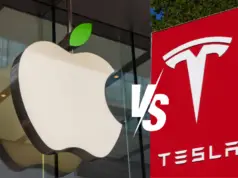Tesla Powerwall is a battery system that can store excess solar energy or grid electricity for later use.
However, some Powerwall owners may encounter a problem where their Powerwall is not discharging at night or when there is high demand for electricity.
This can result in higher electricity bills and lower self-reliance.
Why is Powerwall Not Discharging?
Cause 1: Not Fully Charged
One of the reasons why your Powerwall may not be discharged is that it is not fully charged.
This can happen if your solar panels are not producing enough energy during the day or if your grid electricity is too expensive or restricted to charge your Powerwall.
You can check the charge level of your Powerwall in the Tesla app or by looking at the LED indicator on the right side of your Powerwall.
If your Powerwall is not fully charged, you may want to adjust your Powerwall mode in the app to prioritize charging over self-consumption.
You may also want to check your solar system for any faults or inefficiencies that may reduce its output.
Cause 2: Lost Connection with the Gateway
Another reason why your Powerwall may not be discharged is that it has lost connection with the Gateway, which is the device that controls the communication and operation of your Powerwall.
This can happen due to a power surge, a firmware update, or a network issue. You can check the connection status of your Gateway in the app or by looking at the LED indicator on the front of your Gateway.
If your Gateway is offline, you may want to try rebooting it.
Solution: To reboot the Gateway, follow these steps:
1. Turn off appliances and lights in your home so that you will not damage them by abruptly cutting off their power source.
2. Turn off Powerwall by pressing and holding the button on the right side until the LED turns off.
3. Turn off the AC breakers for Powerwall and Gateway.
4. Keep everything turned off for at least one minute.
5. Turn on the AC breakers for Powerwall and Gateway.
6. Turn on Powerwall by pressing and holding the button on the right side until the LED turns on.
7. If rebooting does not resolve the issue, you may want to contact Tesla Support for further assistance.
Cause 3: Detected Fault or Error
A third reason why your Powerwall may not be discharged is that it has detected a fault or an error that prevents it from operating normally.
This can happen due to a hardware malfunction, a software glitch, or an external interference. You can check for any alerts or notifications in the app or by looking at the LED indicator on the right side of your Powerwall.
If your Powerwall has an alert or an error, you may want to contact Tesla Support for further assistance.
Wrap up
Tesla Powerwall is a smart and reliable battery system that can help you save money and energy.
However, like any other device, it may encounter some problems from time to time. By following these troubleshooting tips, you may be able to fix some common issues with your Powerwall not discharging.
If you need more help, you can always reach out to Tesla Support or your Tesla Certified Installer for professional guidance.





